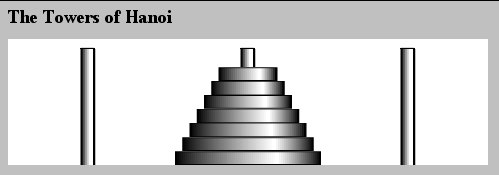Lecture 20

Date of Second Exam: Tuesday, April 17
Encryption Scheme Exercise
Isolating the digits of a four digit number: N = abcd
Lecture 20

Date of Second Exam: Tuesday, April 17
Encryption Scheme Exercise
Isolating the digits of a four digit number: N = abcd
Method 1
d = N % 10
N = (N - d)/10 abc0/10 = abc
c = N % 10
N = (N-c)/10 ab0/10 = ab
b = N % 10
N = (N-b)/10 a0/10 = a
a = N % 10
Method 2:Use Math.floor function
Math.floor(X) = integer part of X
Math.floor(19.83) = 19
d = N % 10
c = ( Math.floor(N/10) ) % 10 Math.floor( abc.d ) = abc
b = ( Math.floor(N/100) % 10 Math.floor(ab.cd) = ab
a = ( Math.floor(N/1000) % 10 Math.floor(a.bcd) = a
Functions in JavaScript
Outline
Introduction
Program Modules in JavaScript
Programmer-Defined Functions
Function Definitions
Random Number Generation
Modularization
Simulation
Duration of Identifiers
Scope Rules
Recursion
One function may call another function.
Can a function call itself?
Yes!
A very powerful idea.
Must be used with care.
Infinite Loops possible

Too much recursing can be dangerous!
Factorials
6! = 6 * 5 * 4 * 3 * 2 * 1 = 720
N! = N * (N-1) *(N-2) *...*3*2*1
N! is the product of
the first N positive integers
<HTML>
<HEAD>
<TITLE>Factorial via For Loop </TITLE>
<SCRIPT LANGUAGE = "JavaScript">
function factorial(N)
{ var S,i;
S = 1;
for (i = 1; i <= N; i = i + 1)
S = S * i;
return S;
}
Number = window.prompt("Enter a Positive Integer", " ");
Number = parseInt(Number)
document.writeln( "<H1>The factorial " + Number +"! is " + factorial(Number) );
</SCRIPT>
<BODY BGCOLOR = "salmon"> </BODY> </HTML> factorial2.html
6! = 6 * 5 * 4 * 3 * 2 * 1 = 6 * (5!)
factorial(6) = 6 * factorial(5)
N! = N * (N-1) *(N-2) *...*3*2*1
= N * [(N-1) *(N-2) *...*3*2*1 ]
= N * (N-1)!
so factorial(N) = N
* factorial(N-1)
<HTML>
<HEAD>
<TITLE>Factorial via Recursion </TITLE>
<SCRIPT LANGUAGE =
"JavaScript">
function factorial(N)
{
if (N == 1) return 1;
else return N* factorial(N-1)
}
Number = window.prompt("Enter a Positive Integer", " ");
Number = parseInt(Number)
document.writeln( "<H1>The
factorial " + Number +"! is " + factorial(Number) );
</SCRIPT>
<BODY BGCOLOR = "salmon"> </BODY>
</HTML>
Another Application of Recursion
Converting Decimal to Binary
<HTML>
<HEAD>
<TITLE>Converting From Decimal to Binary </TITLE>
<SCRIPT LANGUAGE = "JavaScript">
N = parseInt(window.prompt("Enter N", "") );
Convert(N);
function Convert(N)
{
if (N != 0)
{ Convert(Math.floor(N/2) );
document.writeln(N % 2) ; }
}
</SCRIPT>
</HEAD>
<BODY BGCOLOR = "white"> </BODY>
</HTML>
<HTML>
<HEAD>
<TITLE>Convert From Decimal to Arbitrary Base</TITLE>
<SCRIPT LANGUAGE = "JavaScript">
N = parseInt(window.prompt("Enter number to convert from base 10 ", "") );
Base =parseInt(window.prompt("Enter new Base:", " ") );
document.writeln(N + " in base 10 becomes, in base " + Base + " the number " );
Convert(N);
function Convert(N)
{
if (N != 0)
{ Convert(Math.floor(N/Base ));
document.writeln(N % Base) ; }
}
</SCRIPT>
</HEAD>
<BODY BGCOLOR = "white"> </BODY>
</HTML>
Towers of Hanoi

Goal: Move n disks from Pole A to Pole C:
Recursive Idea
if n = 1, then just do it. (1 move)
if n > 1, then
move (n-1) disks from A to B
move last disk from A to C
move (n-1) disks from B to C
Let Moves(n) be the number of moves it takes to transfer n disks.
Thus Moves(n) = Moves(n-1) + 1 + Moves(n-1)
so Moves(n) = 1 + 2*Moves(n-1)
<HEAD>
<TITLE>Number of Hanoi Moves </TITLE>
<SCRIPT LANGUAGE = "Javascript">
var Disks;
Disks = window.prompt("How many disks?","");
Disks = parseInt(Disks);
function NumberMoves(N)
{ if (N == 1) return 1;
else return 1 + 2*NumberMoves(N-1)
}
document.writeln("To move " + Disks + " disks takes " + NumberMoves(Disks) + " moves.");
</SCRIPT>
</HEAD>
<BODY BGCOLOR = "white"> </BODY>
</HTML>
<HEAD> <TITLE>Towers of Hanoi</TITLE>
<SCRIPT LANGUAGE = "JavaScript">
function MoveDisk(fromPeg, toPeg)
{ document.writeln("Move Disk from " + fromPeg + " to " + toPeg + "<BR>");
}
function hanoi(N, fromPeg, toPeg, helpPeg)
{
if (N == 1)
MoveDisk( fromPeg, toPeg);
else
{ hanoi(N-1, fromPeg, helpPeg, toPeg);
MoveDisk( fromPeg, toPeg);
hanoi(N-1, helpPeg, toPeg, fromPeg) };
}
Disks = window.prompt("Enter Number of disks", "");
Disks = parseInt(Disks);
hanoi(Disks, "A", "B", "C");
</SCRIPT>
</HEAD>
<BODY BGCOLOR = "white"> </BODY>
</HTML>
Hanoi.html
Assignment 20
3) Write a recursive function which takes an integer value and returns the number with the digits reversed. For example, given the number 13452, the function should return 25431. Incorporate the function into a script that prompts a value from the user. The script should be able to handle an integer with any number of digits (including one). The user simply inputs the number; the user is not asked to tell the program how many digits are in the number.
Recursive Idea:
Chop off units digit
Reverse the rest
Example : 1983
chop off 3: 1983 reverse 198
chop off 8: 198 reverse 19
chop off 9: 19 reverse 1
chop off 1: 1
Arrays
Consider a stringin JavaScript.
It is a sequenceof characters
W = window.prompt("Enter something", "");
Suppose user types in Middlebury
W = Middlebury
| M | i | d | d | l | e | b | u | r | y |
| W[0] | W[1] | W[2] | W[3] | W[4] | W[5] | W[6] | W[7] | W[8] | W[9] |
<HEAD>
<TITLE>Arrays </TITLE>
<SCRIPT LANGUAGE = "Javascript">
W= window.prompt("Enter a word","");
document.writeln("<H1>The word you gave me was " + W);
document.writeln("<BR>The individual characters are ");
for (i = 0; i <= 9; i = i + 1)
document.writeln("<BR>" + W[i]);
</SCRIPT>
</HEAD>
<BODY BGCOLOR = "white"> </BODY>
</HTML>
W.length tells us.
<HTML>
<HEAD>
<TITLE>Arrays </TITLE>
<SCRIPT LANGUAGE = "Javascript">
W= window.prompt("Enter a word","");
document.writeln("<H1>The word you gave me was " + W);
document.writeln("<BR>The individual characters are ");
for (i = 0; i <= W.length - 1; i = i + 1)
document.writeln("<BR>" + W[i]);
</SCRIPT>
</HEAD>
<BODY BGCOLOR = "white">
</BODY>
</HTML>
<HTML>
<HEAD>
<TITLE>Arrays </TITLE>
<SCRIPT LANGUAGE = "Javascript">
W= window.prompt("Enter a word","");
document.writeln("<H1>The word you gave me was " + W);
document.writeln("<BR><BR>Now we will write it backwards:<BR>");
for (i = W.length-1; i >= 0; i = i - 1)
document.write(W[i]);
</SCRIPT>
</HEAD>
<BODY BGCOLOR = "white">
</BODY>
</HTML>
